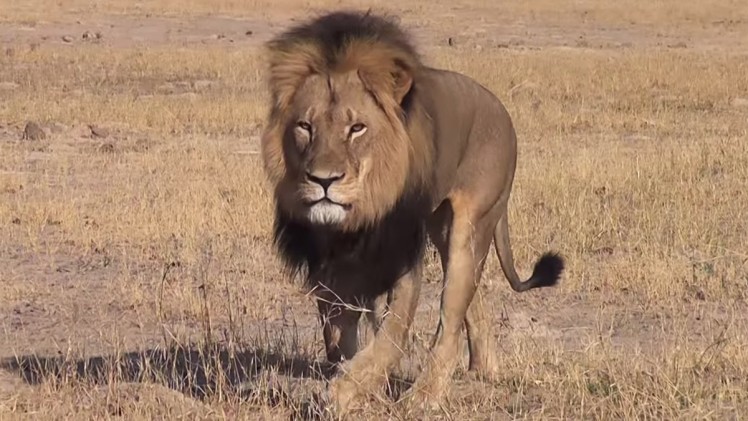
by Tim Middleton
The Big Five is what everyone wants to see; no safari will be complete without seeing all of them. We may be excited by seeing one, even two of them, but nothing can ever beat the thrill, the awe of seeing all five on one safari. Each is magnificent in its own way. These are the most difficult and dangerous animals to hunt on foot and have always been seen to be the big trophies. For the casual tourist, they remain the ones we want to see. But what is so special about each of them?
At the top of the list usually is the lion, the often-proclaimed king of the beasts. Here is the animal that everyone wants to see. It has great power, strength and ability. It reigns over most other creatures and looks at others disdainfully. It roars loudly and rips other animals apart with ease and violence. Then we have the elephant, bigger, tougher, sometimes aggressive and generally getting its own way wherever it goes. It appears clumsy, thick-skinned, very visible, part of a large herd and often goes long distances to achieve its goals. Thirdly we have the leopard, the most elusive of the five, the most secretive and furtive. They are less in numbers, tend to be loners, and often climb trees with their prey. Fourthly, we find the buffalo, gathering and travelling together in great herds, looking after each other, but potentially very aggressive and dangerous, not least when wounded or hurt. Lastly, we look for the rhino, predominantly an individual, capable of great strength, but in recent times threatened by extinction through commercial exploitation.
When we look at education, we also have the Big Five that everyone should want to see: these are the intellectual, physical, cultural, social and spiritual aspects (or beasts!) of the curriculum. No curriculum will be complete without seeing all of them. Certainly we might be excited by seeing one of them, but nothing will ever beat the thrill and benefit of seeing all five in the one place.
In a school, everyone wants to see the academics, just as in the wild everyone wants to see the lion. The academic side of the curriculum often sees itself as the king of the curriculum, the one at the top of the ladder. Trophy hunters look for As wherever they can. The academic side is seen as what rules the daily life of the school; it often looks down on other “creatures” and seeks to frighten them into submission to its routine. It is afraid of no other aspect of the curriculum. But then we do also have the elephant, which may symbolise the sport in our school. Sport is very prominent, obvious, demanding, not particularly concerned about any other aspect of the curriculum though occasionally the academics will look to bring it down. Sport brings people together; sport goes far in its pursuit of attaining its goals; sport seems to have a knack of getting its own way.
However, school, like the wild, does not only have the big two, but the Big Five. Like the leopard, the cultural side of school is not so visible, but still must be seen as a sight to behold. It is quiet, singular, often well-hidden from view, keeping very much to itself. Of all these animals though it can climb the highest, be it for safety or sighting. We must see such cultural activities at school. Equally, as the buffalo is very dominant and a key participant in the wild so the social side of school is an essential. The gathering of children in groups at school, like the buffalo, provides them with crucial lessons.
They have to learn to live together and protect each other from other lurking dangers. Finally, the rhino represents the spiritual side of school which has enormous power and is best seen when on its own; like the rhino, though, in many schools this “beast” is becoming extinct.
In Zimbabwe we have the great privilege and opportunity of not only seeing the Big Five in the wild, but also the Big Five in schools. Jean Kapata, Zambia’s Minister of Tourism at the time of the killing of Zimbabwe’s famous lion Cecil, declared that “the West seemed more concerned with the welfare of a lion in Zimbabwe than of Africans themselves”, and added that “In Africa, a human being is more important than an animal.” Our children are indeed far more important than our wildlife; and education is far more important than entertainment. So we must protect the Big Five of education. As King Mufasa in The Lion King advises his son Simba, “Everything you see exists together in a delicate balance. As king, you need to understand that balance and respect all the creatures, from the crawling ant to the leaping antelope.” So in education, we need to see how all aspects of learning exist together in a delicate balance; we need to go wild and see all five parts.
- Chamisa under fire over US$120K donation
- Mavhunga puts DeMbare into Chibuku quarterfinals
- Pension funds bet on Cabora Bassa oilfields
- Councils defy govt fire tender directive
Keep Reading
l Tim Middleton is the executive director of the Association of Trust Schools [ATS]. The views expressed in this article, however, are solely those of the author in his private capacity and do not necessarily represent the views of the ATS.











